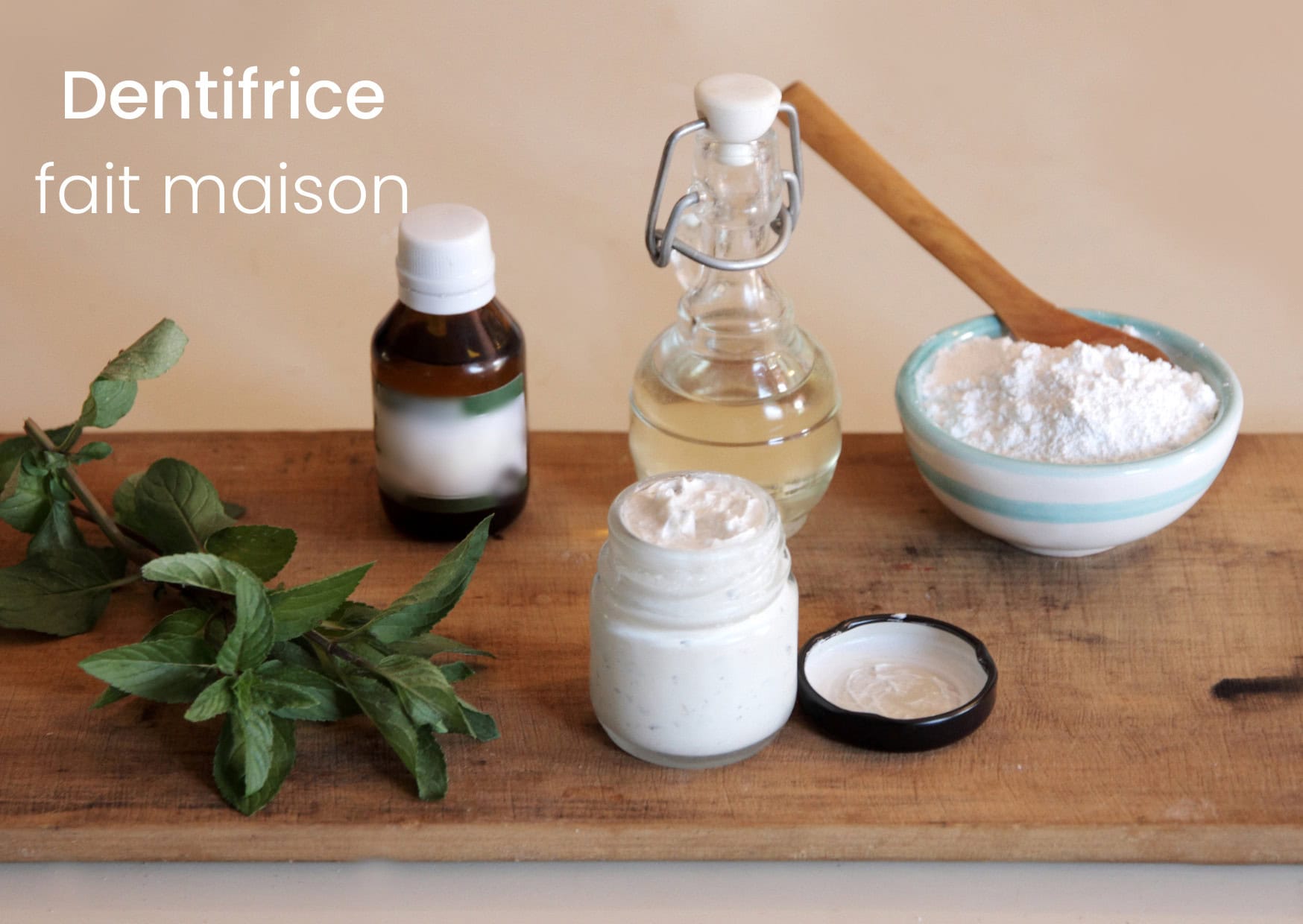Commercial toothpastes often contain ingredients that are difficult to identify in terms of their usefulness or safety. What’s more, their non-recyclable plastic packaging and high water content increase their environmental impact, particularly during transport. In short, their manufacture, packaging and distribution generate a lot of grey energy.
Homemade toothpaste is a natural, economical and zero-waste alternative to conventional commercial products. But is it really effective? What ingredients should you choose? Here are a few tips and a recipe to help you take the plunge!
A few precautions to take
Before taking the plunge, it’s essential to choose your ingredients carefully:
White clay: not very abrasive, it cleans gently.
Baking soda: whitening and antibacterial, it should be used sparingly to avoid damaging enamel.
Coconut oil: whitening, antibacterial and antifungal, it gives a pleasant texture.
Essential oils (peppermint, tea tree, lemon, etc.): provide pleasant freshness and antibacterial properties, but should be used with caution (avoid for children and pregnant women).
Activated charcoal: effective for whitening teeth, but should only be used once or twice a week.
Please read this information carefully !
Materials
- 1 mortar
- 1 balance
- 1 small container with lid
Ingredients
- 15 g white clay
- 10 g bicarbonate of soda
- 3 g coconut oil
- Optional: 1 g activated charcoal
- Optional: Zinc citrate 0.6 g
- Optional: Menthol crystals 0.3 g or 5 drops of peppermint essential oil
Preparation
Place all the ingredients in a mortar. Mix with a pestle to obtain a homogeneous powder. Pour the mixture into the container
Application: Dip a slightly dampened toothbrush into the powder so that a thin layer of toothpaste adheres, then brush your teeth as usual.
Store your jar away from light and heat.
For other Zero Waste tips for the bathroom, see our Zero Waste in 10 steps bathroom programme.
Source: Aroma-Zone
